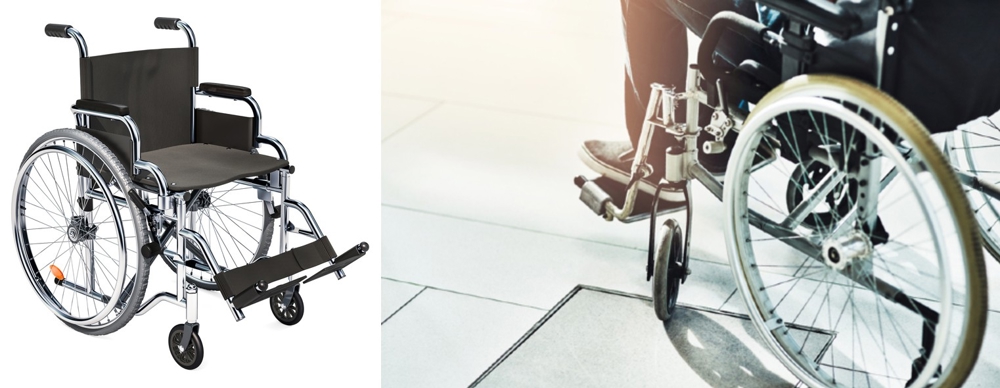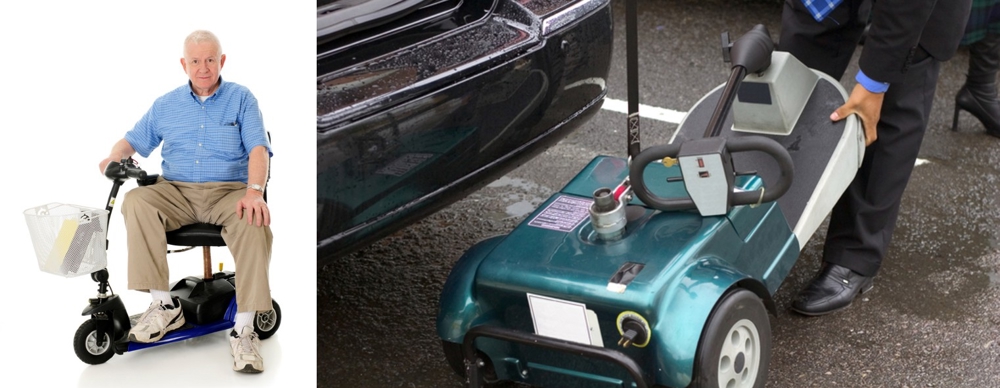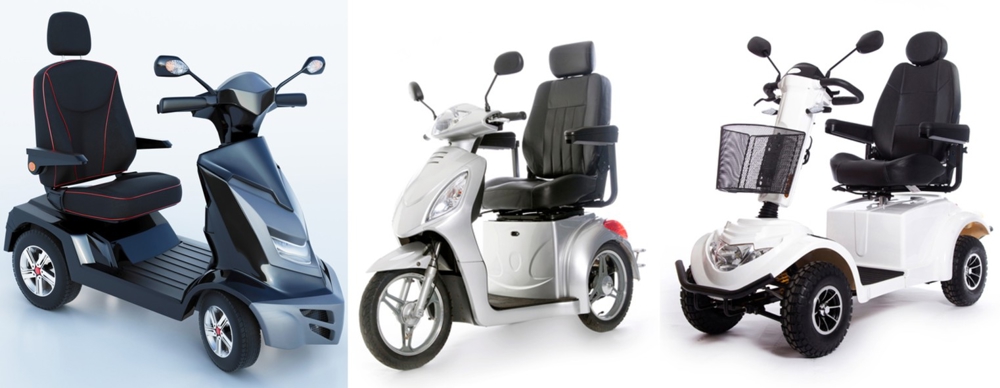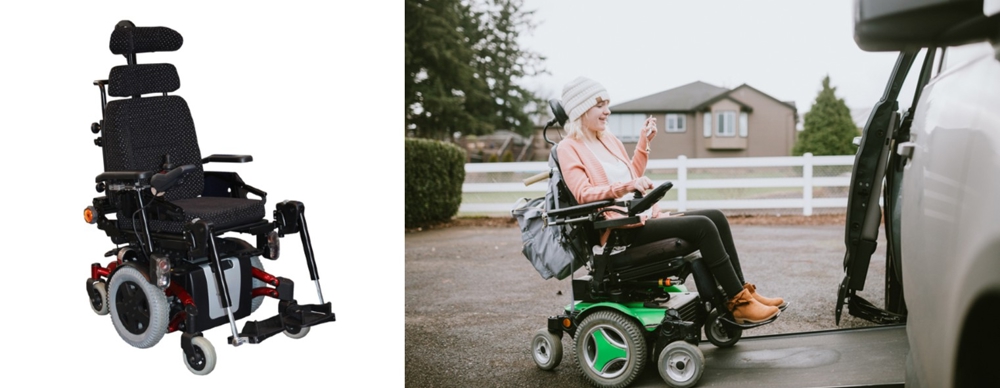Libraries
Access and use our libraries safely with your mobility scooter
We promote the social model of disability. We value that disabled people should be able to join society on an equal basis and with dignity and respect. We support the safe use of mobility scooters in our libraries so that disabled people have equal access to our services.
We also take the health and safety of our customers, residents, staff, contractors and visitors seriously. Therefore we want to make sure mobility scooters are being used safely in our public libraries.
Whilst mobility scooters aren't regulated in the UK, the primary legislation relating to mobility scooters includes:
- Regulatory Reform (Fire Safety) Order 2005
- Equality Act 2010
- Management of Health and Safety at Work Regulations 1999
- Use of Invalid Carriages on Highways Regulations 1988
The legislation says that public buildings must have disabled access, including access for mobility scooters.
If you have a large mobility scooter you may struggle to get around our libraries. This is because they're normally designed for wheelchairs or powered wheelchairs and smaller pavement mobility scooters.
In order to ensure the safety of all our customers we do not allow Class 3 mobility scooters to be used in our libraries. This is due to the size and possible speed of the vehicles.
If you plan to use a mobility scooter inside a library you must use a smaller folding scooter or compact pavement scooter (Class 2). It will be easier for you to move around in the library and safer for all customers using the building.
Please note: this guidance does not apply to the use of powered wheelchairs (also known as power chairs), which are able to be used in our libraries.
We recognise that not allowing larger scooters in the library could disadvantage some customers. Library @ the Lightbox has a small electric scooter and two folding wheelchairs available. You can transfer into for use in the building if you have a larger scooter.
You should be aware that in the event of a fire the lifts cannot be used. You will either have to leave the upper floors via the stairs or wait for assistance in the disabled refuge areas.
If you're using a smaller mobility scooter or power chair in libraries, please don't go faster than 3mph as people walk slower in buildings.
If you use a Class 3 scooter and would not be able to use a smaller wheelchair or smaller electric scooter, please contact us. We're happy to discuss your access needs with you and how we can help you to access our library services.
Classes of scooter
Mobility scooters are defined as an 'invalid carriage' under the Use of Invalid Carriages on the Highways Regulations 1988. They're divided into three categories.
If in doubt about a category of scooter, our staff can check the make and model details on the internet.
Class 1 vehicles
- Manually operated wheelchairs (not powered by electric).

- Powered wheelchairs and mobility scooters for pedestrian routes and indoor use that are limited to a maximum speed of 4mph. They don't exceed an unladen weight of 113.4kg.
- Boot scooters which are designed to be compact and easier to fold or take apart. They can be moved in the boot of a car.
Class 2 vehicles aren't allowed on the public highway and aren't required to be registered with the Driver and Vehicle Licensing Agency (DVLA).
Class 2 vehicles have the following features:
- generally smaller, lighter and less powerful;
- can be designed for indoor and/or outdoor use. If for indoor use they will have limited outdoor use and less distance range;
- some can be taken apart or folded for moving;
- outdoor models have the ability to climb kerbs;
- have a top speed of 4mph (6.44 km/h).

Class 3 vehicles
- Powered vehicles and mobility scooters that are designed to:
- travel up to 8mph and are used on roads/highways and;
- fitted with a device to restrict travel to a maximum speed of 4mph on pedestrian routes and for indoor use.
- Class 3 vehicles must not exceed an unladen weight of 150kg.
- Class 3 vehicles are not classed as motor vehicles but they are required to be licensed with the DVLA for road use. They can't be operated by anyone below the age of 14.
Class 3 vehicles have the following features:
- a maximum unladen weight of 150kg
- a maximum width of 0.85m;
- are generally bigger, heavier and more powerful;
- are not for indoor use;
- can be used on the road;
- have a longer distance range;
- cannot be taken apart;
- have a top speed of 4mph (6.44km/h) off the road and 8mph (12.9km/h) on the road;
- an efficient braking system;
- front and rear lights and reflectors;
- direction indicators able to operate as a hazard warning signal;
- an audible horn;
- a rear view mirror;
- an amber flashing light if it’s used on a dual carriageway.

Powered wheelchairs
This guide is not to be used to restrict the use of powered wheelchairs (also known as power chairs) in libraries. We've included this advice to help identify powered wheelchairs.
A powered wheelchair, rather than a mobility scooter, may be used if you need to stay in a wheelchair throughout the day. It can also be used if you have restricted mobility in one or both hands, or are unable to transfer on and off a seat easily.
Some of their other key features of powered wheelchairs are:
- they are moved using a joystick, whilst mobility scooters use a tiller and handle bars.
- they typically have 6 or more wheels, whilst a mobility scooter has 3 or 4 wheels. (Most power chairs have two large drive wheels and four smaller wheels called casters to make them more stable).
- scooters and powered wheelchairs can be used both indoors and out. Powered wheelchairs offer more movement indoors.

More information and guidance
- GOV.UK: Mobility scooters and powered wheelchairs: the rules
- Mobility scooter guidance for residential buildings
- CareCo: Where can you drive your mobility scooter?
- GOV.UK: Mobility scooters and powered wheelchairs on the road - some guidance for users
- Research Institute for Disabled Customers (RiDC): Travelling with a scooter
- Motability: Types of powered wheelchairs
